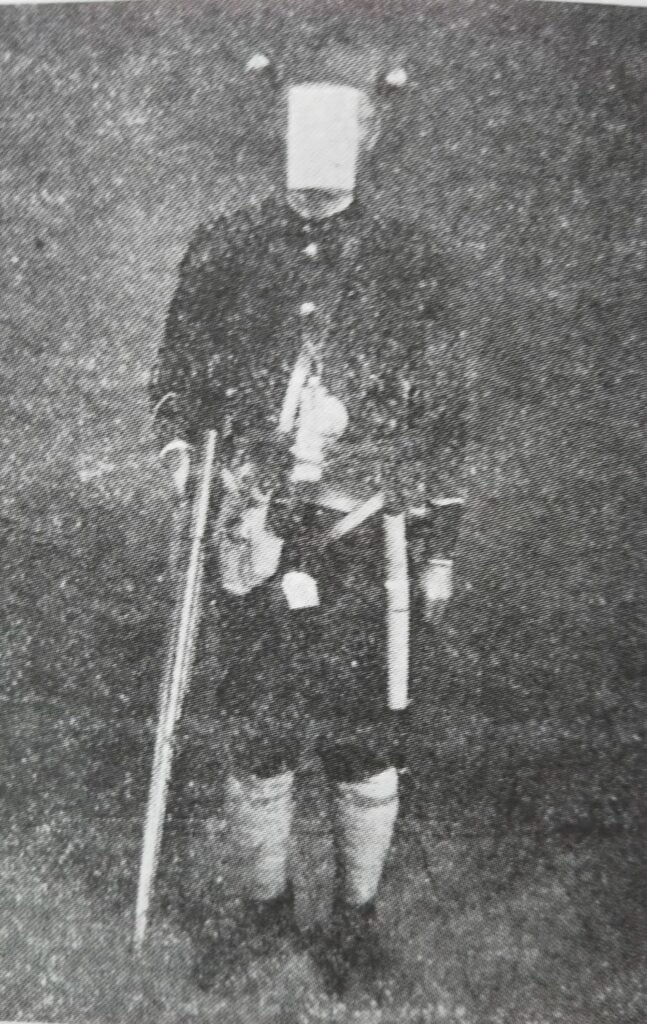In the dark of a spring night in 1938, an act of unmitigated violence would forever alter the communal life of one small Japanese village.
A young man stalked through his home village, light streaming from flashlights affixed to the sides of his head, rifle in hand. At his side slung a katana. This man had allowed the rage building up inside him – rage against his sick body, and at the women of his village, and their sexual inaccessibility to him – to lead him on a murderous rampage.
Before the night was out, thirty people would be dead. To this day, the Tsuyama Massacre remains the deadliest act of lone-gunman violence in Japanese history.
The Tsuyama Massacre occurred nearly 85 years ago. Its memory, once repressed, continues to haunt the Japanese consciousness. And while such acts of mass violence are rare in modern Japan, the incident does strike an eerie familiarity to many abroad. Nearly a century onwards, similar motivations combined with easy access to firearms have led to numerous young men committing comparably unspeakable violence on the people around them.
Was Toi Mutsuo, the 21-year-old perpetrator of the Tsuyama Massacre, an early harbinger of an age of grievance-based, lone-wolf killings? What was the village milieu in which he was raised like, deep in those mountains? And was Mutsuo really the first proto-incel mass murderer?
A Hamlet Lost in the Trees

Modern Tsuyama, which gives the massacre its name, is a quaint provincial city in northern Okayama Prefecture.
The hamlet through which Toi Mutsuo stalked that night in 1938 only became part of Tsuyama in 2005. Until then, it was part of a separate entity, known as Kamo-machi (加茂町). Kamo was a collection of small, mountainous agricultural hamlets.
Planning a trip to Japan? Get an authentic, interpreted experience from Unseen Japan Tours and see a side of the country others miss!

"Noah [at Unseen Japan] put together an itinerary that didn’t lock us in and we could travel at our own pace. In Tokyo, he guided us personally on a walking tour. Overall, he made our Japan trip an experience not to forget." - Kate and Simon S., Australia


Keep all you devices connected in Japan - rent a pocket wifi device! Available for hotel pickup or delivered to your airport. Fast speeds and backed by excellent customer service. (Note: Affiliate link - Unseen Japan earns a commission if you make a purchase.)
At the time of its absorption into Tsuyama, the entire town had a population of only a little over 5000. Back in 1938, it was further broken down into smaller villages and towns.
Toi Mutsuo (都井 睦雄) was born in March of 1917, in the 6th year of the Taisho era. His birthplace was deep in the Chugoku Mountains, north of Tsuyama.
While still a toddler, he lost both his father and mother to tuberculosis. Mutsuo and his older sister were given over to the care of his grandmother, and this newfound family moved into a small temple further down the mountain.
When he was six, they relocated to his grandmother’s home hamlet, Kaio. (貝尾部落.) A small valley bounded by mountains to the east and west, Kaio was a rural community like many in early 20th-century Japan: Isolated, insular, and agricultural.
Young Mutsuo was officially the head of his small household – women not being able to be registered as such. Yet despite their circumstances, the Toi family was well enough off. His grandmother had both an income and some land, and engaged in dry farming. Their livelihood was fairly stable. From that point on, Mutsuo’s entire life would revolve around that small mountain hamlet.

A Different Sort of Community Life
In Kaio, many of the rhythms of life resembled those of Japanese villages for centuries previous. People farmed, held harvest festivals, and carted their crops off to larger communities for sale. Everyone in little Kaio knew each other.
Modernity had brought some changes. Telephone poles reached high above parts of the hamlet, connecting it to the outside world. Farmers used modern hunting rifles to repel wild boars. Childhood education was formalized and compulsory.
Mutsuo entered Nishi Kamo Elementary School, where he generally excelled. He was considered a gifted child, and was fairly well-liked. It was upon graduation at age fourteen that he had his first brush with a long line of recurring illnesses. He was struck with pleurisy, and his doctor ordered that he be relieved of any farmwork. For three months, he lived an idle, boring life. The youth’s illness took a turn for the better, however, and he was soon moving on to the next level of his education.
Here he continued to do well, and it was believed he had a bright future ahead of him. Yet despite many of his classmates having generally positive feelings towards Mutsuo, he was not particularly close with any of them. Some would later say that there was a pessimism behind his gentle smile.

The Village Art of “Night Crawling”
There was another element of village life that bares acknowledging here: the nature of intimate relationships between men and women.

